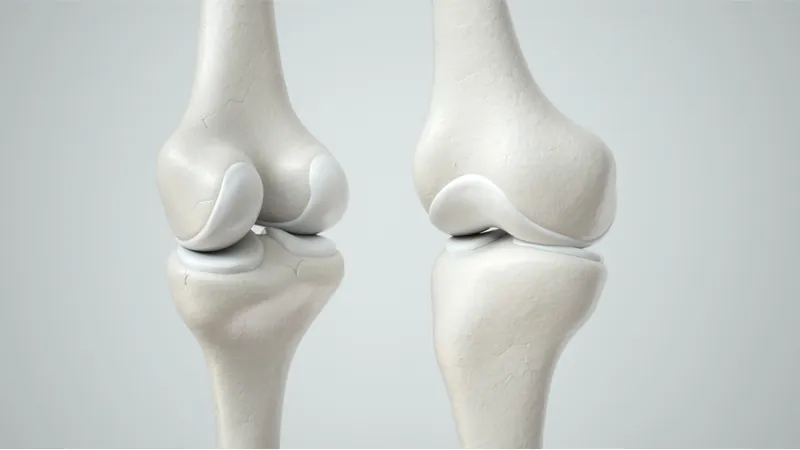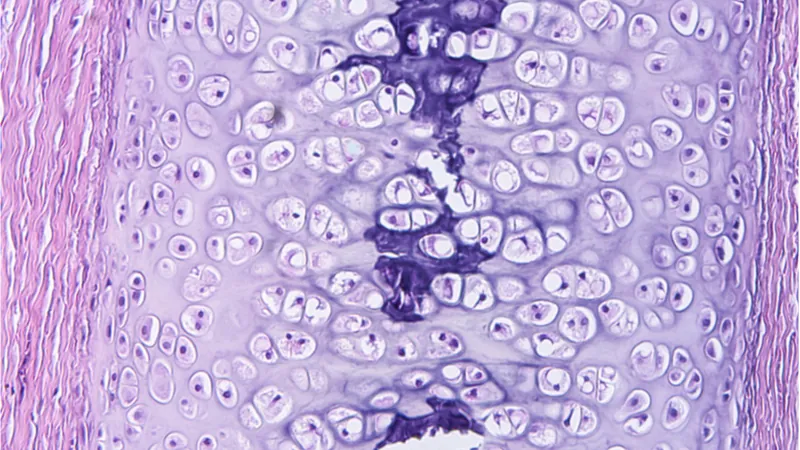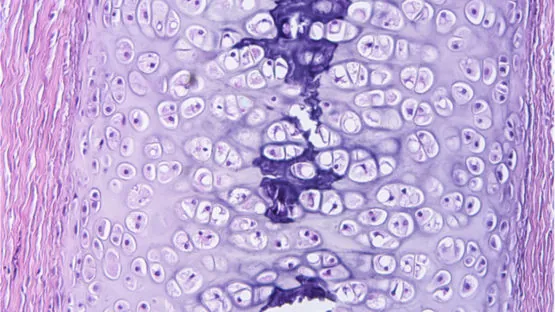New research published in Stem Cell Research and Therapy has improved the regenerative potential of chondrocytes in vitro.

Read More
The challenges of cartilage regeneration
Regenerative medicine strategies aim to regenerate the natural cartilage itself to its former glory. This can be either by kick-starting the body’s own healing abilities, growing cartilage in the lab for implantation, or a combination of the two. At first glance, this might seem easier than regenerating other tissues because the difficulty of neural innervation and vascularization, major roadblocks for other tissue types, are not present for cartilage. However, this also severely limits the ability of cartilage to heal itself, limiting how much researchers can rely on the patient’s own healing abilities. Grafted tissues must be highly matured, as they will not develop much further after implantation and do not integrate well with existing cartilage. Furthermore, since the mechanical properties of cartilage are specialized and they are exposed to strong forces, even small deviations from natural properties can result in accelerated wear in implanted materials.
A novel strategy emerges
On this front, a recent collaboration led by Dr. Majid Safa has improved our understanding of chondrocyte differentiation and increased our abilities to regenerate cartilage in vitro [1]. The researchers inhibited matrix metallopeptidase 13 (MMP-13) using the small molecule known as BICA. They studied the release rate of this drug and determined its optimum concentration in an alginate-based hydrogel.
Using this concentration, they then cultured mesenchymal stem cells in the hydrogel-BICA scaffolds and showed that BICA not only inhibited MMP-13 and hypertrophy (a major barrier to the effectiveness of chondrocytes), it also increased chondrocyte differentiation and the cartilage-like tissue that was laid down by the cells. The researchers placed mechanical loads on these scaffolds in order to further improve cartilage regeneration.
In conclusion, PL and CS enhance the mechanical properties and support cell viability in combination with Alg hydrogel. The results presented in this study showed that the tri-part hydrogel composed of Alg, CS, and PL can induce chondrogenic differentiation of hBM-MSCs by the upregulation of collagen type 2 and aggrecan. Also, it was shown that addition of BICA inhibited hypertrophy during chondrogenic differentiation of hBM-MSCs. Moreover, our results indicate that BICA improves hBM-MSCs differentiation into chondrocytes as it increases the expression level of chondrogenic genes as well as GAG and collagen deposition. In order to mimic the physiological environment of chondrocytes, a mechanical shear loading simulation was also provided. It is demonstrated that the applied loading regimen induces chondrogenic differentiation in case of GAG secretion.
Conclusion
This study showed that by inhibiting hypertrophy through the MMP-13 pathway, chondrogenesis can be improved. Additionally, while it is well known that mechanical stimulation also improves chondrogenesis in vitro, it is notable that this strategy synergistically improved outcomes in combination with BICA, suggesting that they operate through separate mechanistic pathways. This drug alone is unlikely to reverse the progression of osteoarthritis, but it demonstrates a meaningful improvement over current regeneration strategies and, in the future, it may be used in combination therapies for even better results.
Literature
[1] Jahangir, S., Eglin, D., Pötter, N., Ravari, M. K., Stoddart, M. J., …, Safa, M. (2020). Inhibition of hypertrophy and improving chondrocyte differentiation by MMP-13 inhibitor small molecule encapsulated in alginate-chondroitin sulfate-platelet lysate hydrogel. Stem Cell Res Ther. 11: 436. doi: 10.1186/s13287-020-01930-1



